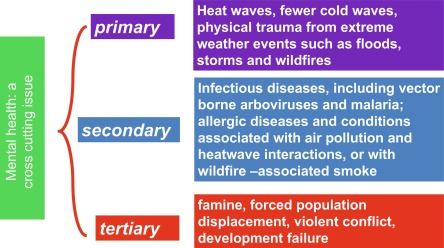A paper that explores how interventions can help reduce the waiting times in an epilepsy outpatient clinic.
Policymakers continue to contend with the challenge of measuring and classifying schools concerning educational resources, which makes it difficult for policy development and implementation towards efficient allocation of the scarce resources available to education managers. This study, therefore, sought to estimate the extent of educational resource deprivation among Basic Schools in Ghana and find out its effect on the delivery of quality education.
Truter et al. investigate how diet and culture influence the Ju|’hoansi intestinal microbiome, which can influence health and well-being. They find that while the Ju|’hoansi intestinal microbiome is distinct, it resembles that of other hunter-gatherer populations.
Elsevier,
Handbook of Nanomaterials: Electronics, Information Technology, Energy, Transportation, and Consumer Products: Volume 1, Volume 1, 1 January 2024
In this chapter, we discuss various methods for synthesizing nanomaterials and their properties for application in energy generation. We also explore the practical applications of different nanomaterial-based energy-generating devices and their performance, positioning them as alternative technologies to traditional power sources. The chapter highlights the overall performance—thermal, electrical, and mechanical—of nanomaterial-based energy generators and examines the role of various nanomaterials in energy-harvesting devices. Finally, we address the current challenges in applying nanomaterials in energy generation.
This study seeks the view of ten school principals on the pathways of incorporating environmental education into the school curriculum in South Africa.
Shows behavioural and physiological responses to habitat change
This Article supports SDG 3 sequencing hepatitis C virus genomes in west Africa, showing the level of genotypic diversity and measuring the response to direct-acting antivirals.
The article analyzes the effect of women's engagement in agriculture (WEA) on income inequality in sub-Saharan Africa (SSA) using data from 1991-2018.
Human health, in the coming decades (and already in some “front-running” regions), is in peril. Although some authorities warn that over-stating such risks can induce paralysis and despair, under-stating them will not generate the intense action that is required. The impact of climate change on the Earth system is now so significant that the next ice age will likely be delayed by at least 50,000 years [201]. If humans do not rapidly change their collective behavior, then this may be their most enduring legacy. It is hoped that this chapter makes a small contribution to SDG3.
Knowledge of biological diversity is a major source of innovation. Collective intellectual property of traditional knowledge by Indigenous peoples and local communities is an important source of innovation and product development. This article investigates collective intellectual property systems on the traditional knowledge of Aspalathus linearis, also known as rooibos—an endemic plant from South Africa which is the basis of an important herbal tea industry. The article discusses how collective action and self-organization can generate collective intellectual property systems; indigenous peoples and local communities can develop these systems to protect their IP; how these systems can promote social justice and a more equitable distribution of benefits but can be sources of dispute between socio-economic groups and communities and can reproduce historical inequalities and power asymmetries.

